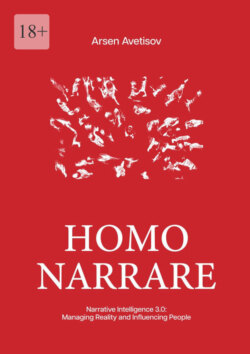Читать книгу Homo narrare. Narrative Intelligence 3.0: Managing Reality and Influencing People - Арсен Аветисов - Страница 6
PART ONE. NEUROPHYSIOLOGY
Neurophysiology of Worldview
How We Perceive Information, How We Represent the World, and How We Reproduce It in Our Consciousness.
ОглавлениеIt is easier to seduce than to conquer.
Over the last half-century, numerous studies and discoveries have reshaped our understanding of how narratives influence worldviews and behavior. A Canadian psychologist, Allan Paivio, proposed the concept of a «dual coding system» while studying memory psychology. According to this idea, humans process information through two main systems: visual and verbal. These systems work in parallel, creating independent representations of what is seen and heard. As the information passes through several processing stages, it is eventually stored in long-term memory. At this stage, an image can be given a name, or a name retrieved from memory can be paired with an image.
There is, however, a unique feature: the reality created and remembered in this way can belong equally to the real world or an imagined one. The primary purpose and significance of this system is to enable people to conceptualize and label the information received through their sensory channels.
This perception and representation system relies on subjective evaluations and pre-existing images and judgments stored in memory. Together, these elements form what is commonly called a worldview. A worldview influences an individual’s core life positions, beliefs, ideals, and behaviors. It gives human activity a sense of purpose and meaning, helping individuals understand their place within the conceptualized system.
However, over time, the information stored in memory undergoes various changes. It can become distorted, interpreted differently, or ultimately transformed into something new. At first glance, this seems intuitively familiar. Yet, there is a subtle but crucial aspect that becomes evident when the concepts and processes involved are clearly defined.
The first concept is «a person’s attitude to the surrounding reality.» This is expressed in moods, feelings, and actions, forming an emotional and psychological foundation. The second concept is «a set of views on the world,» a cognitive and intellectual framework that reflects an understanding of the surrounding world. When we visualize our understanding of the world, our emotional and psychological attitude to the surrounding reality transitions to the intellectual and cognitive level of a set of views on the world. This means that by influencing how we perceive the world – particularly through the primary channels of sight and hearing – we can alter someone’s views of it.
Information is always essential because it helps build a more complete picture of the world and provides a sense of security. Not long ago, all the senses contributed relatively equally to shaping this picture. The world was more tangible, closely tied to the present moment. People could see, hear, touch, smell, and taste their surroundings. For instance, gold coins were tested by biting them. Items were touched, tried on, or even sniffed before being accepted or bought.
But the world has changed. Today, the primary channels of information are vision and hearing – sometimes only one or the other. The information received through these channels is no longer tied directly to the current moment. It can refer to the past or the future, creating a gap between the information and the immediacy of the events it describes. Watching screens or listening to news reports cannot convey the depth of a landscape, the richness of sounds, the subtleties of taste, the warmth of touch, or the variety of smells. Even with cutting-edge pixel densities and audio clarity, the real sensory dynamics of the world cannot be fully experienced, leaving us with artificially created representations. People now perceive a world based on information provided by others. This is a defining characteristic of today’s process of shaping a person’s attitude to the surrounding reality, which in turn forms the set of views on the world for millions.
Abstract representations created by modern information systems are built on a directive model. There is no live feedback, no chance to touch, smell, or feel, no opportunity to ask questions, gauge reactions, and get immediate answers. Instead, the brain receives digitized and polished images edited by information channels.
The overwhelming flow of information projected onto people creates fragmented attention spans. The speed of switching focus and the fragmented nature of perception depend entirely on the significance of the agenda set by the media. The blending of imaginary and real threats, combined with the lack of adequate feedback, leads to mental disorientation and a constant sense of uncertainty about the world. Without a full sensory picture where one channel complements or confirms another – where beauty aligns with taste – the perception of the world becomes even more fragmented and illusory. The decrease in real-world interaction and changes in lifestyles further intensify this illusion and uncertainty.
The danger of today’s accessible information sources lies in the inability to verify their accuracy in real time. When doubts arise about the reliability of one source, people seek confirmation from another. For example, understanding a speaker’s true meaning based only on their words and tone can be difficult. In such cases, people try to gather additional visual information. If confusion or misunderstanding persists, they might attempt to ask questions. But try asking questions to a television!
In essence, the brain pays little attention to the limitations imposed by civilization and technological progress. To maintain relevance, it focuses on what is immediately available – what can be seen and heard – without the ability to instantly verify the truth of this information. For thousands of years, evolution required humans to rely on all their senses in real time. But as screens became prevalent, life shifted into a realm of images and captions. This shift opens limitless opportunities for persuasion, directing thoughts, and manipulating worldviews.
